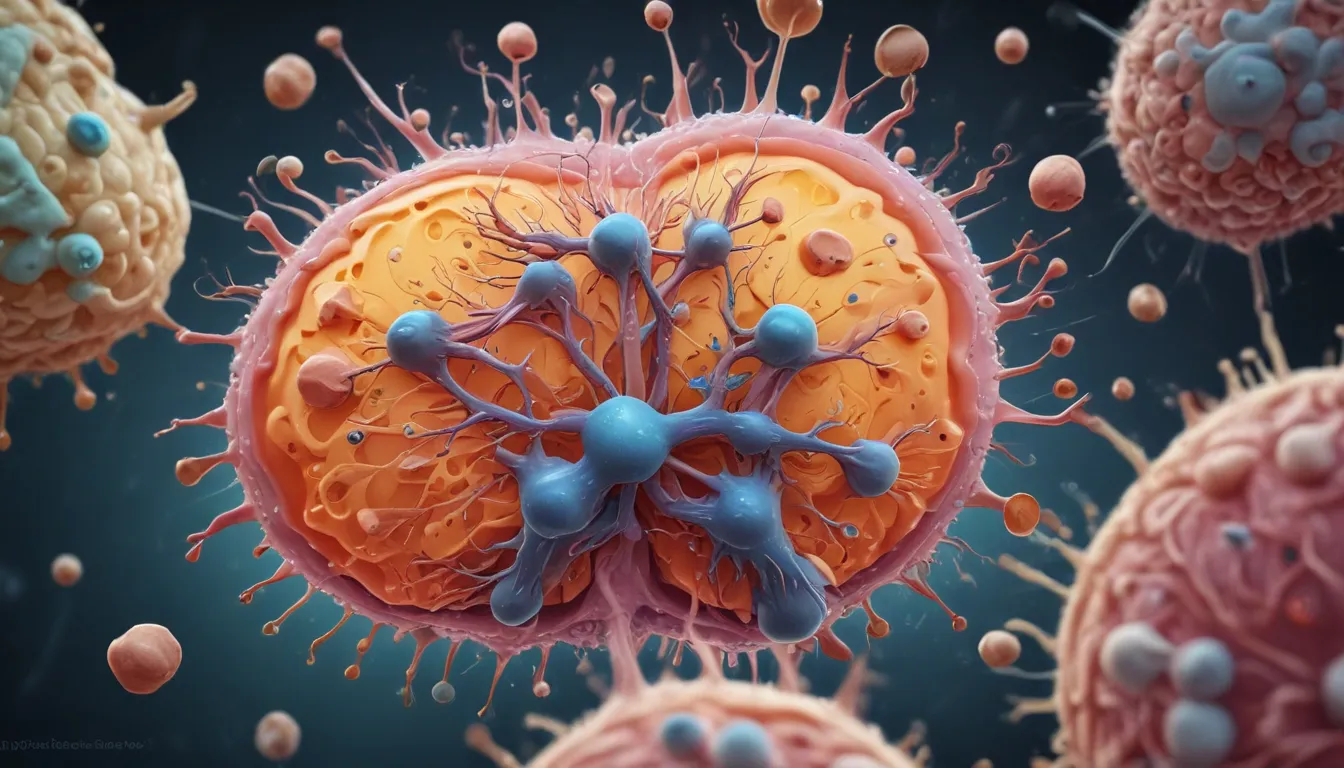A Note About Images: The images used in our articles are for illustration purposes only and may not exactly match the content. They are meant to engage readers, but the text should be relied upon for accurate information.
Do you ever stop to wonder about the intricate processes that occur within our cells, keeping us alive and thriving? Endocytosis is one such fascinating cellular mechanism that plays a crucial role in sustaining life. It acts as a cellular delivery service, allowing cells to internalize nutrients, eliminate waste, and communicate with neighboring cells. In this article, we will delve into 13 surprising facts about endocytosis that will not only deepen your understanding of this fundamental process but also highlight its significance in maintaining overall cellular health and functionality.
Endocytosis: A Fundamental Cellular Process
Endocytosis is a fundamental mechanism that takes place in all eukaryotic cells, involving the uptake of materials from the extracellular environment into the cell by forming vesicles from the plasma membrane.
The Three Pillars of Endocytosis
There are three primary types of endocytosis: phagocytosis, pinocytosis, and receptor-mediated endocytosis. Each type operates through a distinct mechanism and serves specific functions within the cell.
Phagocytosis: A Cellular Feast
Phagocytosis, known as “cellular eating,” occurs when specialized cells called phagocytes engulf large particles like bacteria or cell debris. This process plays a vital role in immune defense and the removal of harmful substances.
Pinocytosis: Sipping Into Cells
Pinocytosis, or “cellular drinking,” involves the non-selective uptake of fluid and dissolved solutes into the cell. It allows cells to sample their environment and acquire essential nutrients, particularly crucial in cells lining the digestive tract.
Receptor-Mediated Endocytosis: Precision in Action
Receptor-mediated endocytosis is a highly specific process where molecules bind to receptor proteins on the cell surface, leading to the internalization of receptors along with their bound ligands. This mechanism allows cells to selectively internalize crucial molecules like hormones and enzymes.
Nourishing Cells Through Endocytosis
Endocytosis plays a pivotal role in nutrient uptake, enabling cells to absorb essential substances such as glucose, amino acids, and lipids from the extracellular environment through specific transporters on the plasma membrane.
Recycling Membranes with Endocytosis
Beyond nutrient uptake, endocytosis also contributes to membrane recycling. Vesicles formed during endocytosis can fuse with other cellular compartments or the plasma membrane, releasing contents or recycling membrane components.
Viruses Riding the Endocytic Wave
Certain viruses exploit the endocytic machinery to infiltrate host cells. By binding to specific receptors and triggering receptor-mediated endocytosis, these viruses gain entry and propagate their infectious activities.
Unraveling Disease Connections
Dysregulation of endocytosis has been linked to various diseases, including neurodegenerative disorders, cardiovascular conditions, and certain cancers. Understanding the intricacies of endocytosis offers insight into these pathological conditions.
Signaling Pathways Regulating Endocytosis
Endocytosis is tightly regulated by signaling pathways that respond to external cues, modulating the number and activity of cell surface receptors. These pathways fine-tune the cell’s ability to internalize specific molecules.
Clathrin: A Structural Maestro
Clathrin, a crucial protein in endocytosis, forms a lattice-like structure called a clathrin coat, aiding in invaginating the plasma membrane during this process. It is essential for receptor-mediated endocytosis and cargo transport.
Dynamic Nature of Endocytosis
Endocytosis is not static but a dynamic and finely regulated process influenced by cell type, cargo nature, and cellular signaling cascades. Its adaptability ensures efficient cellular functioning.
Endocytosis: The Orchestra of Cell Signaling
Endocytosis significantly impacts cell signaling by regulating the distribution and availability of cell surface receptors. Internalization of receptors modulates signaling cascades, preventing desensitization and adjusting cell responsiveness to stimuli.
In a world filled with astounding cellular processes, endocytosis stands out as a captivating mechanism vital for cellular health and function. From nutrient acquisition to membrane recycling and disease implications, the role of endocytosis is undeniably significant. By peeling back the layers of complexity surrounding endocytosis, researchers unlock valuable insights into biological processes, setting the stage for potential therapeutic advancements.
Let’s Navigate the Intricacies of Endocytosis Together
Endocytosis is a mesmerizing biological orchestra orchestrating crucial cellular functions. If you’re intrigued by the inner workings of processes like receptor-mediated endocytosis, we offer a wealth of informative articles to satiate your curiosity. Explore the depths of cellular pathways and unearth the wonders of endocytosis as we embark on this enlightening journey together.
FAQs
-
What is endocytosis?
Endocytosis is a cellular process involving the engulfment of substances from the extracellular environment into the cell through vesicles. -
What are the types of endocytosis?
The main types of endocytosis are phagocytosis, pinocytosis, and receptor-mediated endocytosis, each serving specific functions within the cell. -
How does endocytosis benefit cells?
Endocytosis aids in nutrient uptake, cell signaling, receptor recycling, and maintaining cellular health by regulating communication with the environment. -
How is endocytosis linked to human health?
Endocytosis plays a critical role in immune response, neurotransmitter regulation, and drug entry into cells. Dysregulation can lead to various diseases. -
Is endocytosis a target for therapy?
Yes, understanding endocytosis mechanisms can lead to targeted therapies for drug delivery, immunotherapy enhancement, and treatment of diseases linked to endocytic defects.
As we journey through the complexities of cellular mechanisms, trust in our commitment to providing accurate and engaging content. Each fact shared on our platform is a testament to the dedication of our contributors and editors in delivering reliable information to enrich your understanding of the world around us. Dive into the realm of endocytosis with us and explore the wonders of cellular biology.






